Colorful woodwork is the new more stylish take on the feature wall – designers say adding a small unexpected pop of color can be just as impactful
Looking to add a touch of color in just the right place? Designers say focus on your woodwork for an on-trend look
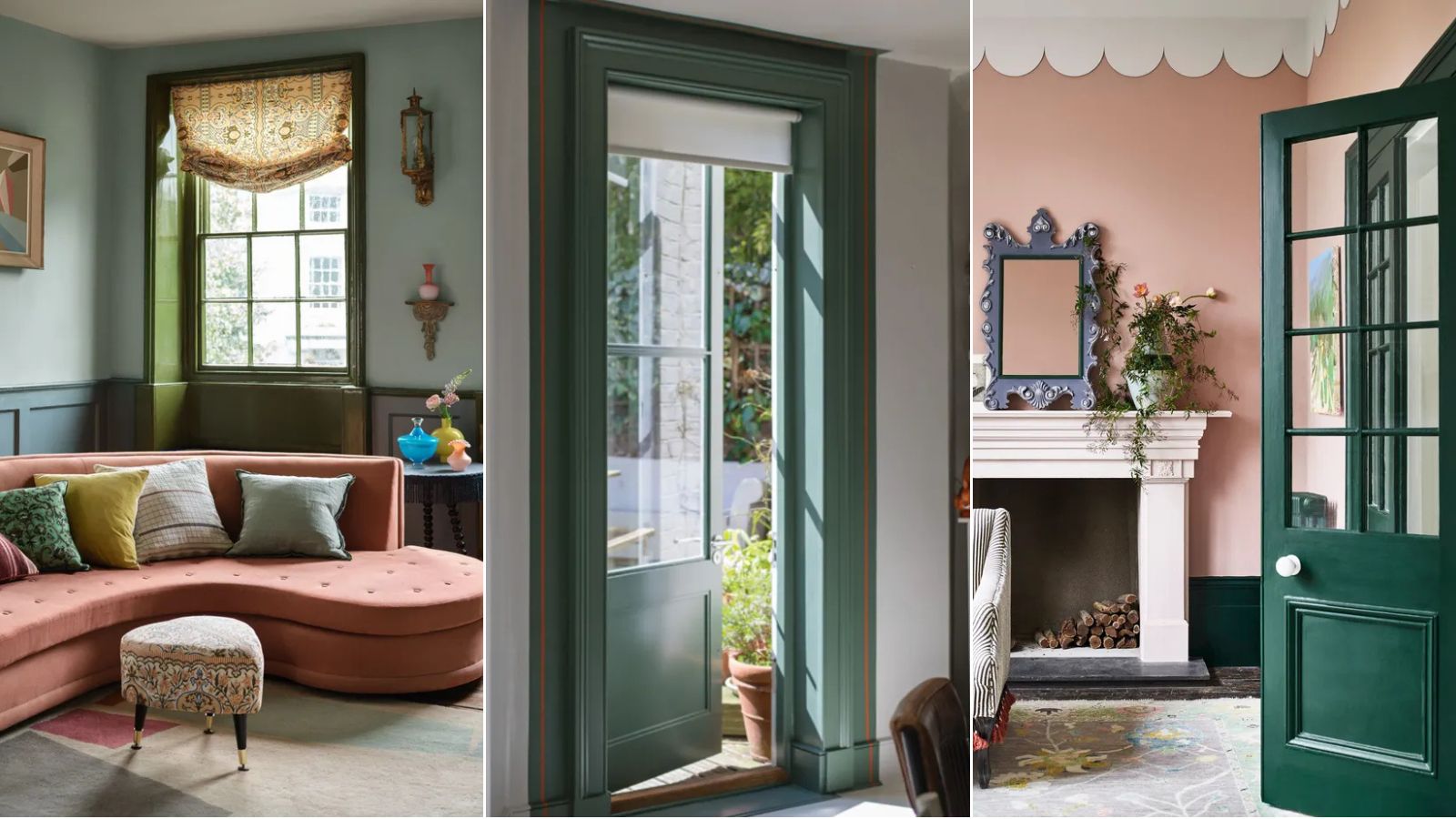
Whilst walls and architectural details have been at the epicenter of color trends, woodwork has largely remained ‘au natural’. Traditionally left natural or painted white, woodwork, like your doors and window frame, has never had much attention when it comes to color. Until now, when we are noticing every stylish new project adds a pop of color using the woodwork. It's like the new feature wall, but far more subtle and stylish.
The contrast this color trend creates is similar to that of what a feature wall aimed to do, just in a smaller dose and less... dated. 'I certainly think colorful millwork is having a real heyday right now,' says Claire Staszak, Interior Designer at Centered By Design. 'Whether it's contrasting trim colors, or painting built-ins or fully paneled rooms, designers prefer the cohesion these techniques offer beyond an accent wall.'
Ruth Mottershead, Creative Director at Little Greene agrees, ‘Incorporating all elements within a space will deliver an ambiance that feels cocooning and welcoming. Previously painted white out of habit, highlighting your woodwork within a room is now regarded very much as an integral part of the design scheme.'
We pulled together some of our favorite projects that break the rules when it comes to neutral woodwork and instead use color to make it a key feature of the space.
1. Keep it tonal
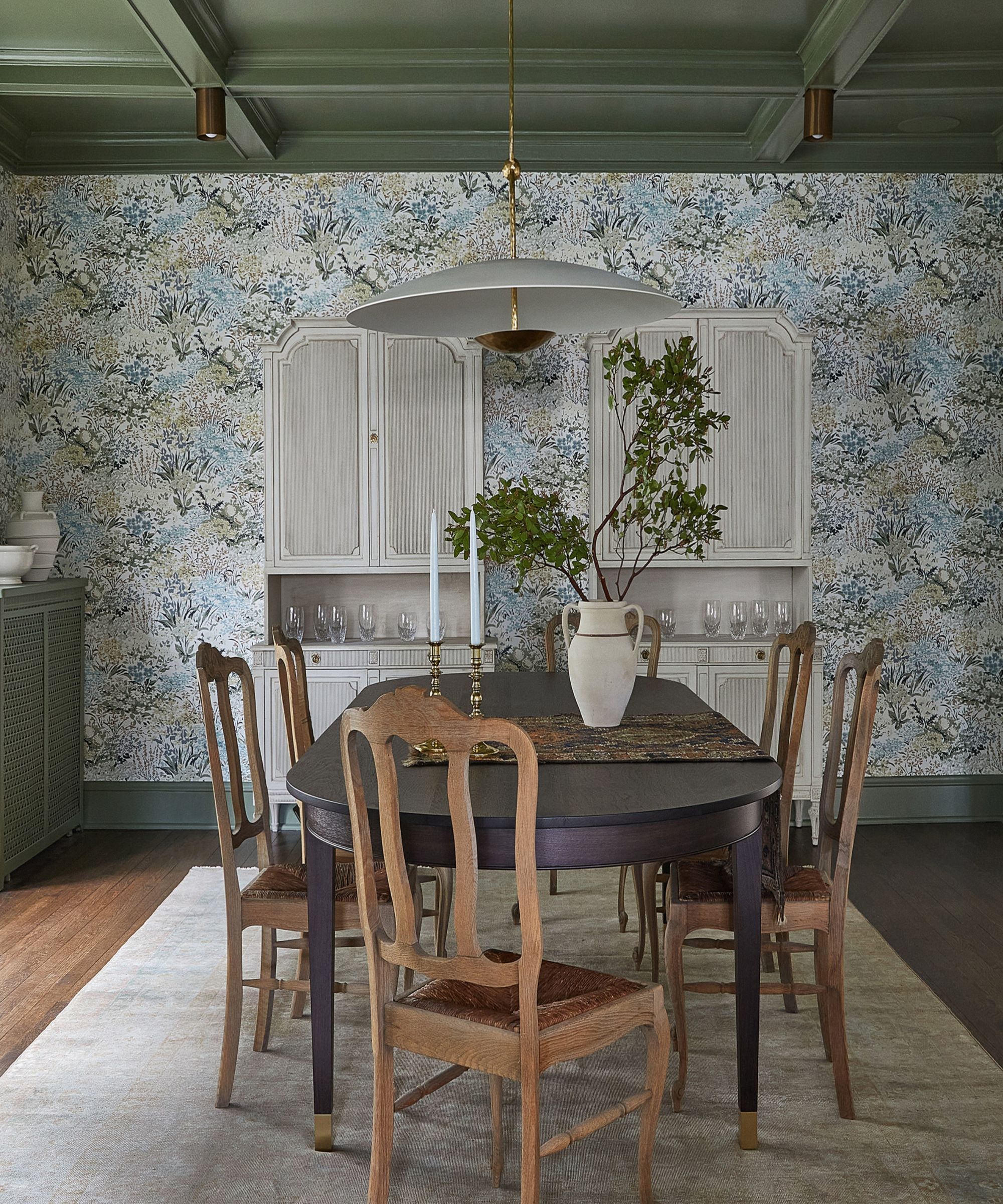
Opting to paint the woodwork in your room doesn’t have to focus on creating striking juxtapositions or contrasts. Instead, it can be a brilliant way to tie together a color scheme seamlessly by keeping everything tonal.
For instance, if you're going for a wallpaper, try introducing one of the softer shades from the print onto the woodwork. This subtle approach will unify the look without overwhelming the space.
For those just dipping their toe into the colored woodwork trend, a muted or light tone is an excellent choice. It adds depth, color, and subtle interest without feeling too bold. Claire Staszak is a fan of using this technique in interior design schemes, such as in the heritage-inspired dining room above. She explains, ‘We love to paint historic trim profiles to help punctuate them and give an updated look, particularly in certain rooms, such as a traditional dining or living room. This keeps things feeling more fresh and modern.'
2. Bring together a clash of colors
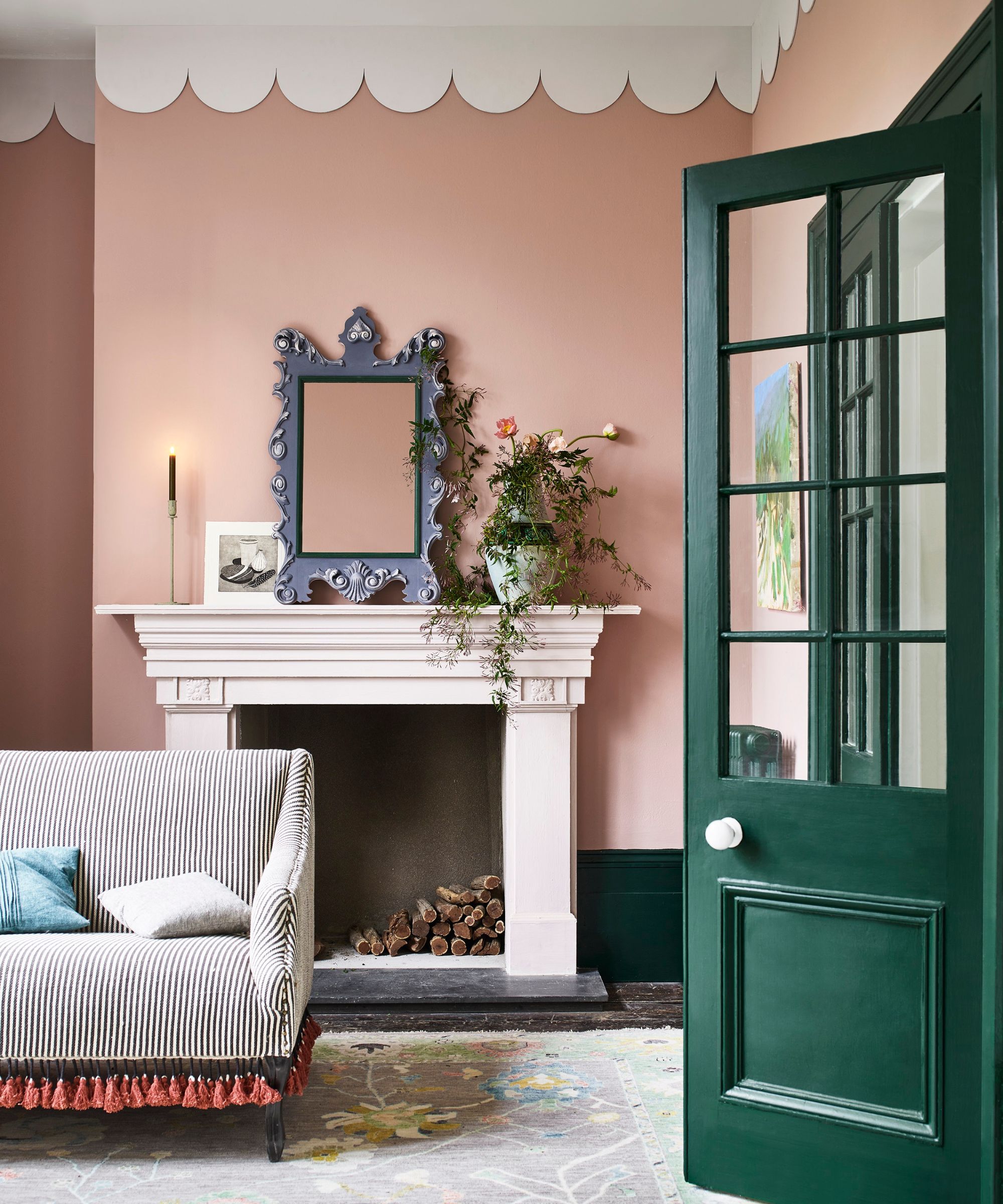
Of course, woodwork also offers the perfect place to clash colors. Skirting boards, door frames, window trims, and even interior doors offer the perfect canvas for a pop of color that disrupts without overwhelming the space.
Take, for example, the striking combination of pale pink walls paired with dark forest green woodwork. These two colors are opposite on the color wheel and selecting shades that are more muted from either side of the spectrum creates a striking look yet keeps everything livable.
Paint maestro Annie Sloan perfectly captures this approach explaining, ’Confident interiors are full of delicious contradictions, and homeowners reap the benefits. Blues look brighter paired with warm-toned reds and oranges, pinks bloom against cool-toned greens, whilst black and white has a timeless appeal.'
Little tip? Consider using two hues from the same tonal family for your walls and ceilings, then introducing a third, disruptive color on the woodwork. Let your dominant wall color set the tone while the contrasting woodwork adds that exciting touch.
3. Turn something ordinary into a feature
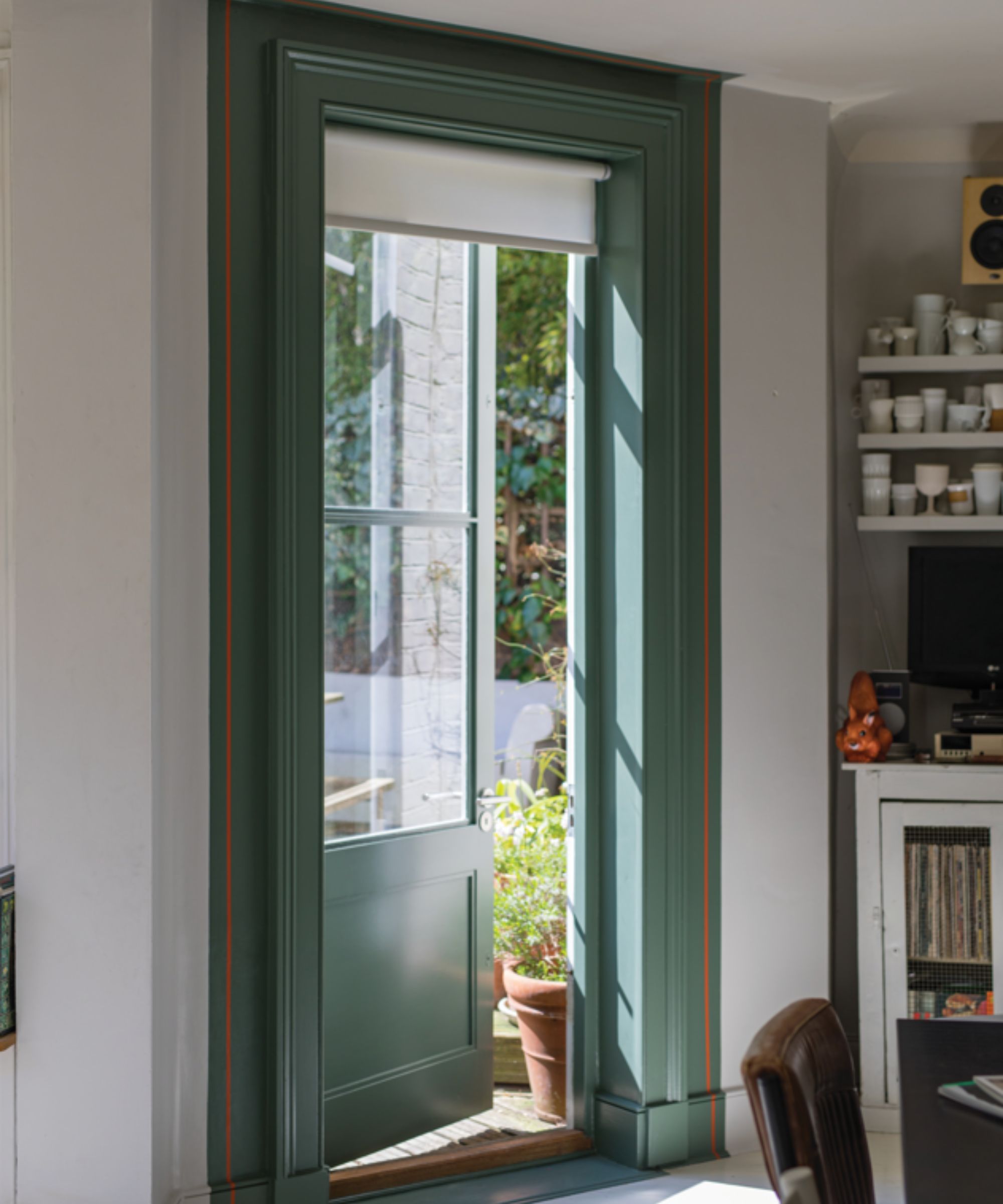
What's wonderful about going bolder with your woodwork color is that you can turn a really ordinary, unassuming part of your room into the focal point. Take a look at your door frames, even if they aren't particularly decorative or interesting, giving them a coat of colorful paint is sure to make them shine.
You could even 'fake' some details using paint and adding in extra lines, or taking the paint slightly further out from the door frame to give it more impact.
4. Go monochromatic
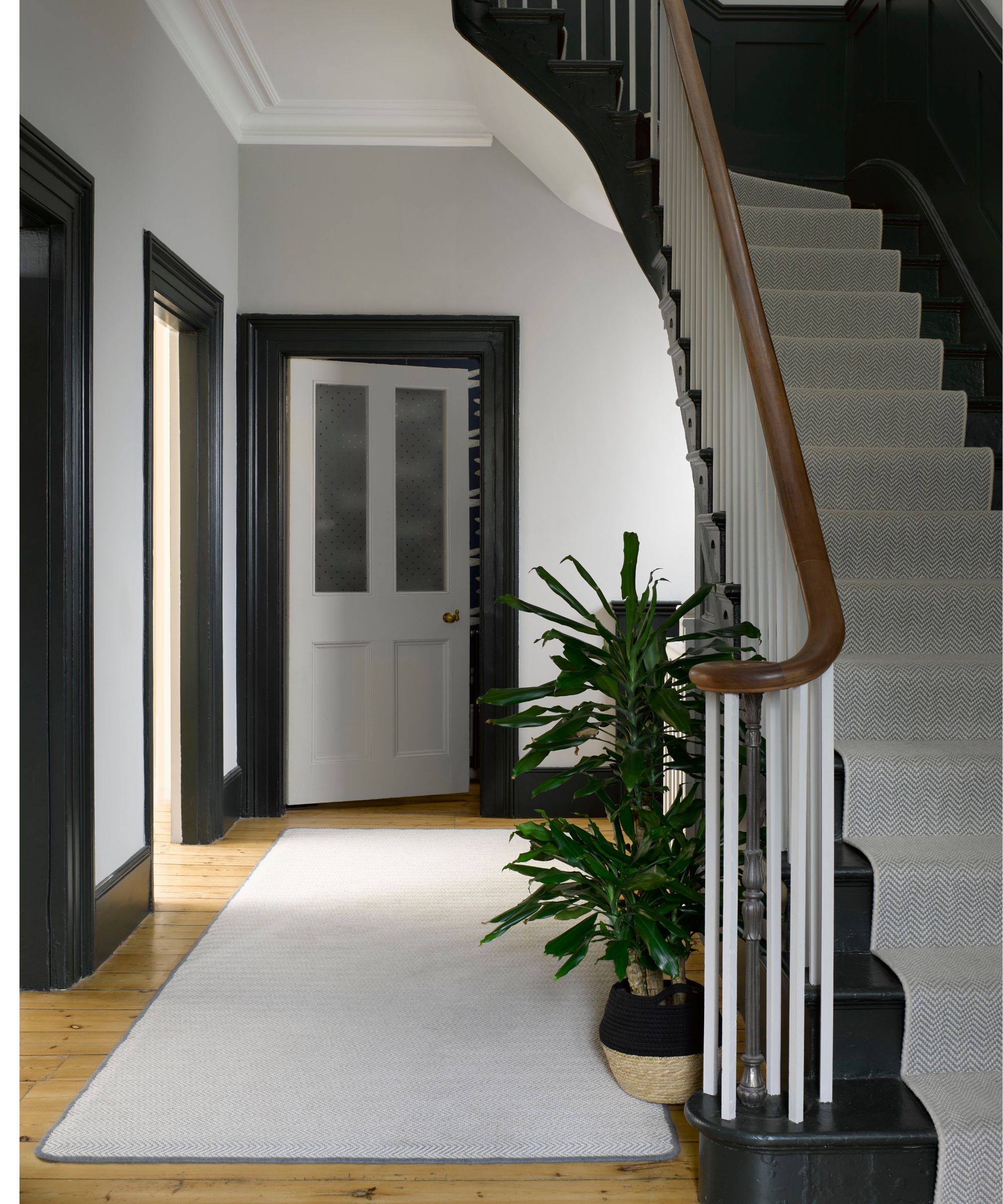
When considering your palette, a monochrome color scheme can work wonders on woodwork, especially in small high-traffic areas like an entryway where you can be bolder. By using different shades of one color, you can create a striking and modern design that zones the various elements, like the steps, rail, and spindles.
As Helen Shaw, Director of Marketing at Benjamin Moore reminds us, ‘Monochromatic schemes, using woodwork to create contrast, are smart and classic. Use a white, off-white, or lighter shade on the walls then pick out the woodwork in a bolder tone. If you have a dado, you can pull the look through to the walls by painting the lower half of the wall, below the dado, in the same color as the woodwork’.
For a bold, punchy look, try color-blocking the treads and risers, or contrasting the banister with the rest of the staircase for a smart but stylish two-tone effect. Black and white will never go out of fashion but applied in a fresh and contemporary way it’s a twist on a classic that will really last.
5. Play with different finishes
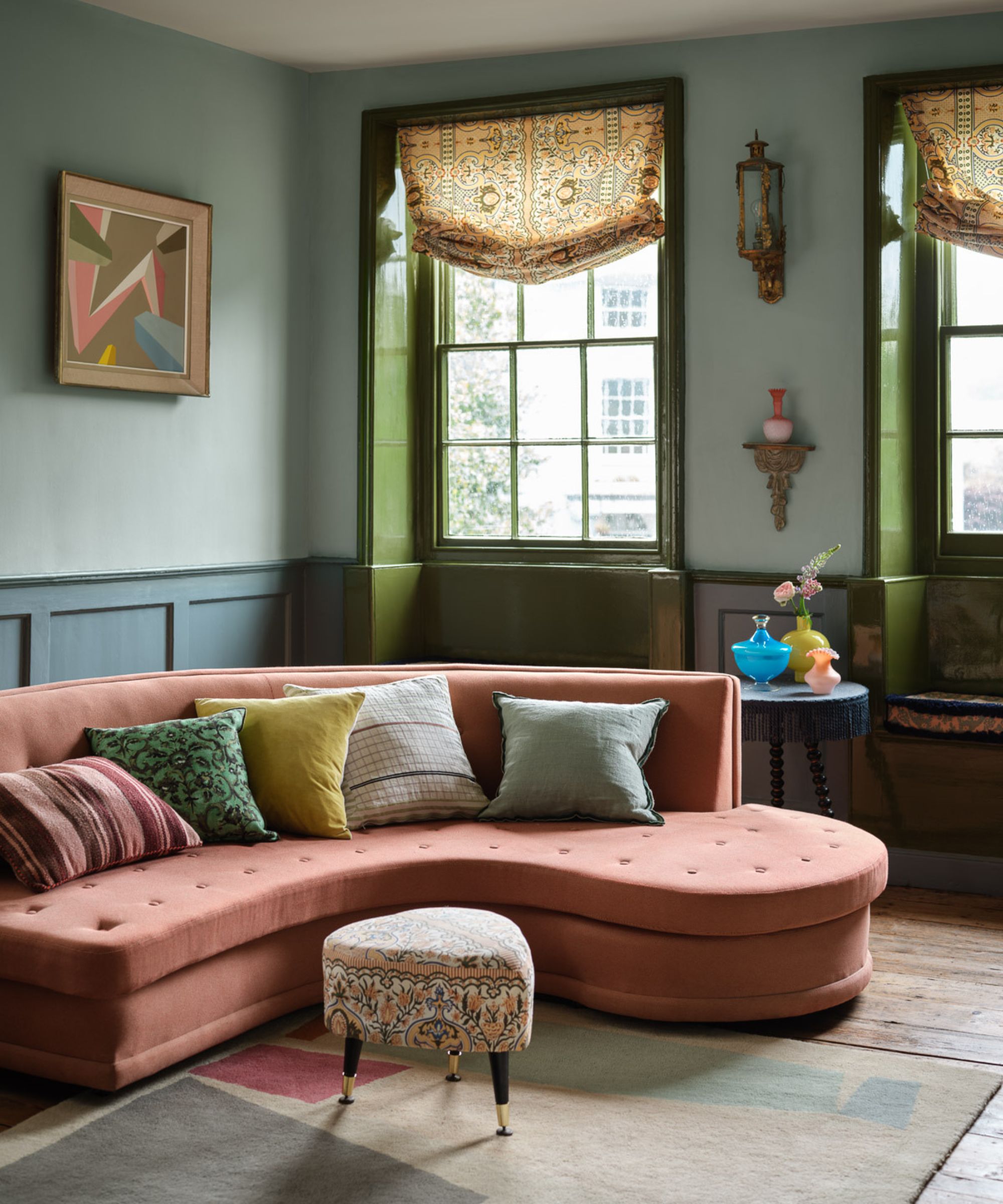
Color is one way to define your woodwork, but the finish can do this too. For your woodwork you normally would use a glossier paint compared to your walls, but really up the contrast by pairing soft matte walls with high gloss woodwork.
This works especially well when painting your windows, because as you can see with the room above you get extra light reflected around the room. Glossy finishes reflect light, giving rooms a luminous, expansive feel, while matt finishes absorb light, creating a cozy, intimate atmosphere. Using these paint finishes in the right place can really play to the spaces' redeeming features.
Helen Shaw suggests, ‘For schemes that are perfectly poised between personality and liveability, try a muted base of easy-to-live-with tones and add in a gloss finish on the details and woodwork to introduce contrast.'
And because the finishes are adding a lot of the contrast for you, you can go subtle with the color choices. Here, glossy green window shutters contrast beautifully and subtly with muted matt blue walls, but the color combination still makes a statement because of the contrasting finishes.
While feature walls can sometimes overpower a room, colorful woodwork introduces subtle contrast and offers a more on-trend look that can make just as much of a statement. Easier to update than wallpaper or expanses of paint, colorful woodwork adds a touch of quirkiness and charm to your space without overwhelming it.
Sign up to the Homes & Gardens newsletter
Design expertise in your inbox – from inspiring decorating ideas and beautiful celebrity homes to practical gardening advice and shopping round-ups.
You must confirm your public display name before commenting
Please logout and then login again, you will then be prompted to enter your display name.
-
 Jennifer Aniston’s bedroom is a ‘goldmine of simple sumptuousness’ – it’s 2025’s version of quiet luxury and so easy to recreate
Jennifer Aniston’s bedroom is a ‘goldmine of simple sumptuousness’ – it’s 2025’s version of quiet luxury and so easy to recreateThe actress's unique space features James Mont-designed lamps and a raised bed inside a walnut plinth – but you can recreate its understated sophistication
By Megan Slack Published
-
 How to keep chickens out of flower beds – 6 tried and tested methods that homesteaders swear by
How to keep chickens out of flower beds – 6 tried and tested methods that homesteaders swear byGive your flower beds a fighting chance by implementing these preventative measures
By Ciéra Cree Published